Take a Science Vacation – Summer Learning in Yellowstone National Park
By Blog Editor Susan Wells
My family and I visited Yellowstone last week. The girls and I had never been, but my husband had spent a few summers in the Youth Conservation Corps back in his youthful days. I knew Yellowstone was full of geothermal features and a lot of wildlife, but I wasn’t prepared for just how much science abounds in the park. If you are looking for an unplugged, family learning vacation, head to Northwestern Wyoming and Yellowstone.
Yellowstone was the first national park established in 1872.
As we drove into the park on a hot Friday evening, it was quiet. Just the forest and the setting sun. Until we reached the center of the park and the edge of the caldera. Steam was rising into the air from vents along the road. Even more steam was rising from the edge of the lake. The edge of the lake!! I felt like a kid as I was surrounded by geology. Living geology. The stuff I read about in school – geysers, vents, mud volcanoes, hot springs and fumaroles. Even after reading about Yellowstone, I wasn’t prepared to be this excited.
I grew up in Colorado – visited the hot springs, hiked and camped in the mountains, seen elk and deer. I thought I had already experienced the majority of natural wonder and magic in the mountains of Colorado. I’ve also visited Volcanoes National Park and Haleakala crater in Hawaii. I’ve seen lava flows and volcanic cones. I’d I had no idea what I was missing (besides Old Faithful).
Yellowstone holds half of the earth’s geothermal features in its more than 3,400 square miles. You can walk, hike and even just drive up to many of the 300 geysers and 10,000 thermal features. As the mud bubbles and the steam blows over the crusted earth, you know you are standing on top of a live volcano.
If you are planning a trip to Yellowstone, prepare for a lot of science.
Junior Ranger and Science Badge
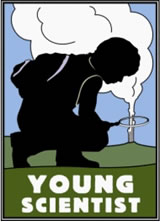
The Junior Ranger program is free for children ages 5 to 12 visiting the park. Stop at any Yellowstone visitor center and request a 12-page activity guide. Based on age, children will need to complete a required number of pages inside the guide as well as attend a ranger talk, hiking on a park trail and completing activities. Although at least a day or two to complete the packet. Return the packet to the visitor center to receive your badge.
Yellowstone also offers a Science badge at the Canyon and Old Faithful areas. (My advice is to do the Old Faithful badge – it involves the geysers and geothermal features.) Children ages 5 and up purchase a booklet at the Canyon Vistor Education Center or Old Faithful Visitor Center for $5. Learn more about the science of Yellowstone by completing the booklet. The rangers will also check out a Young Scientist Toolkit that includes a thermometer, stopwatch and other gear needed to complete the assignment. This activity will take around three hours to complete as you explore the geyser basin near Old Faithful. Young Scientists will earn a badge or keychain.
Geothermal and Hydrothermal Features
Yellowstone has a diverse collection of geysers, hot springs (which can reach temperatures of 400 degrees +), mudpots (bubbling and boiling “muddles”), fumaroles (steam vents), hot spring terraces, and lava flows. Park rangers, visitor centers and maps will direct you to these features. I also tried several apps while we were there. The best one was from Chimani. They offered a driving tour which described several of the best features and areas.
Don’t miss Old Faithful…a spectacular earth science show that will excite. This isn’t the fountains at the Bellagio. Our planet puts on this show. After watching it erupt (about every 90 minutes) take a walk around the other geothermal features in the area. Hot springs and smaller geysers are gorgeous and just as spectacular. You can also hike up to a nearby hillside and watch Old Faithful erupt from a different angle. There are so many features close together, you can spend an entire day in the Old Faithful area.
Just up the road from Old Faithful is the Midway Basin. This area offers several parking areas, walkways and hikes to waterfalls and more hot springs. Don’t miss the Grand Prismatic. This hot spring is about 200 meters across and is the biggest of its kind. Just don’t wear a hat on a windy day. The pools are full of hats, even just a few feet off the path, lost forever.
And one more thing – keep in mind these are natural features, not wishing wells or trash cans. Morning Glory Pool – one of the most beautiful springs in the park, gets plugged up from people throwing trash, coins and other items into the hole. As the hole clogs, the water temperature changes and many of the microorganisms in the pool are killed. The organisms are what create the beautiful colors. Treat the living earth with respect.
Microbiology and Microorganisms
My 8-year-old budding microbiologist found a book in the National Park gift store on all of the tiny creatures living in Yellowstone. Algae, and bacterial mats live in the springs and the rock, giving Yellowstone its color. There are unseen, fragile forests of bacteria that stretch out from the hot springs in brown ribbons. Astronomers study these tiny life forms in Yellowstone in hopes of gaining knowledge on potential life on other planets. If these micro-animals can live where nothing else can on earth, they may also hold the key to life across the universe.
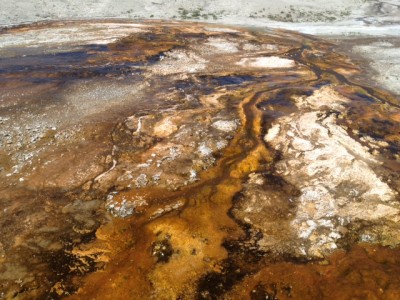
Flora and Fauna
The park abounds with wildlife. Bison are everywhere – walking down the roads, in front of cabin ice machines (it’s a long story), in open meadows and anywhere they want to visit. We saw bison hoof prints in the mud volcanoes and along the dangerous and unsteady land near the hot springs. Even with all the bison in plain sight everywhere, you realize that this is still a small percentage of how many roamed the west before they were almost wiped out.
Deer, elk, moose, big horn sheep, fox, black bears, grizzly bears, and wolves are the most searched for animals in the park. You may spot one in the back trails or alongside the road. It all depends on luck. The Yellowstone website has a map and checklist of the best places to spot certain animals.
Wildlife watchers hang out on overlooks in Hayden Park, watching for anything that moves. We observed some wolves across the meadows nipping at a bison, testing it for weakness. There is nothing like watching wildlife behave like the wildlife you see on nature shows right before your eyes.
There are more than 1,350 species of plants and wildflowers in the park. We apparently weren’t there in wildflower season, but wouldn’t have had any idea. A huge variety of plants and flowers were everywhere.
Even More Geology
The park has diverse geological features. The Grand Canyon of the Yellowstone was formed from erosion. There are also glacial deposits, rhyolite lava flows, faults and my favorite, hoodoos. Hoodoos are tall, skinny spires of rock that protrude from the bottom of basins. Look closely at the rocks in the canyon – they contain a variety of different iron compounds. Exposure to the elements causes the rocks to change color or oxidize. The canyon wall is rusting.
Wildfire Science
Yellowstone’s landscape has been shaped by fire. There is still a lot of evidence from recent and past fires, including the 1988 fires, in the park. We looked closely at the landscape and tried to make educated guesses on how long ago fires had burned in a specific section. Some areas had few blacked trees standing, while most had fallen to the forest floor, and small to medium sized trees growing. Other areas barely had new grass on the forest floor with most of the burned trees still standing. For more on Yellowstone wildland fires, the 1988 fires and how fires are a part of the ecology, visit the Yellowstone website.
Even if you aren’t headed to Yellowstone in the near future, you can take a virtual tour and learn more about what the park has to offer through its Kids Online website.
What are your favorite places to explore in Yellowstone? Where do you take a science vacation?



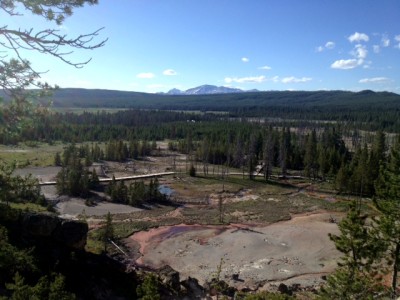
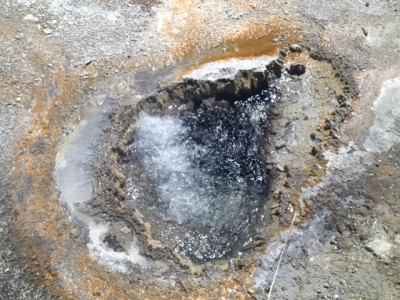
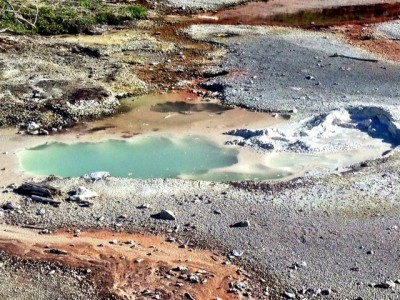
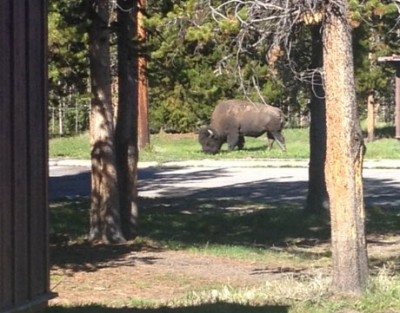
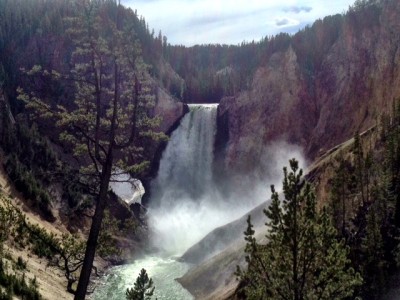

Leave a Reply
Want to join the discussion?Feel free to contribute!